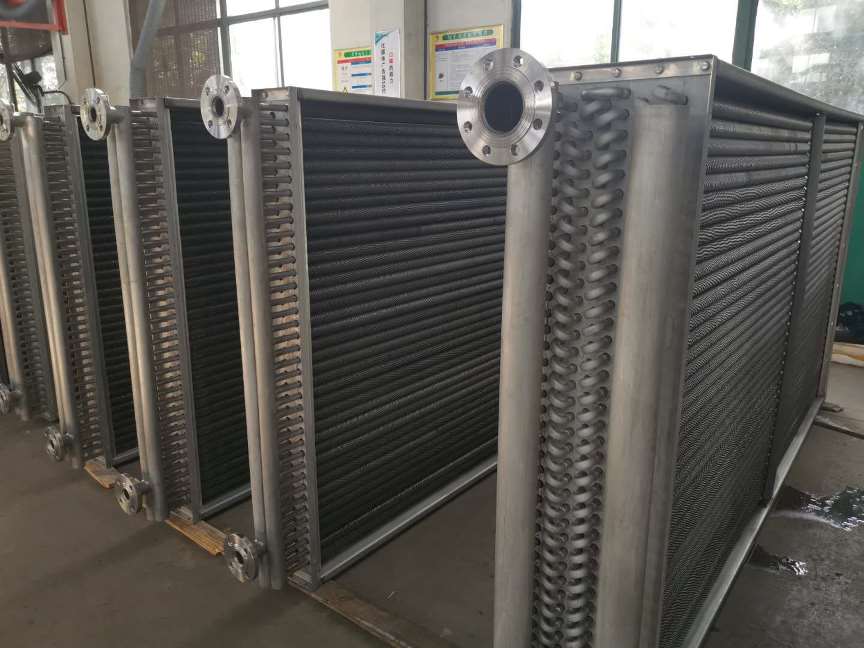Lord Fin Tube-Heat Exchanger Development
Heat Exchanger & Finned Tube Heat Exchangers
Heat exchangers are critical energy-saving devices that facilitate thermal energy transfer between two or more fluids at different temperatures. These systems are fundamental to numerous industrial processes, HVAC applications, and energy efficiency initiatives worldwide.
What is a Heat Exchanger?
Heat exchangers are critical energy-saving devices that facilitate thermal energy transfer between two or more fluids at different temperatures. These systems are fundamental to numerous industrial processes, HVAC applications, and energy efficiency initiatives worldwide.
A heat exchanger is an energy-efficient device designed to transfer thermal energy between two or more fluids at different temperatures. This transfer occurs from the higher temperature fluid to the lower temperature fluid, allowing precise temperature control for specific process requirements. Beyond temperature regulation, heat exchangers serve as essential equipment for enhancing energy efficiency across multiple industries.
The heat exchanger industry spans nearly 30 sectors, including HVAC, pressure vessels, and water treatment equipment, forming an interconnected industrial ecosystem. Continuous development in heat exchanger technology focuses on improving efficiency, performance, and reliability while addressing evolving industry needs and sustainability requirements.
Insight: Heat exchangers prevent direct mixing of fluids while enabling efficient thermal energy transfer, making them indispensable in processes where fluid contamination must be avoided.
Finned Tube Heat Exchangers: Enhanced Thermal Performance
Finned tube heat exchangers represent a specialized category designed to maximize heat transfer efficiency in challenging applications. These devices feature extended surfaces (fins) attached to the primary heat transfer tubes, significantly increasing the effective surface area for thermal exchange.

How Finned Tube Heat Exchangers Work
The fundamental principle behind finned tube heat exchangers involves augmenting the primary heat transfer surface with secondary surfaces (fins). These fins dramatically increase the contact area between the tube and the surrounding fluid (typically air or gas), enhancing the overall heat transfer coefficient.
This design is particularly effective when theres a significant disparity in the heat transfer coefficients between the two fluids. For instance, when transferring heat from a liquid (high coefficient) to a gas (low coefficient), the extended surface area compensates for the gas-side limitation, optimizing overall system performance.
Types of Fin Designs
- Plain Fins: Simple extended surfaces with uniform geometry
- Serrated Fins: Notched or segmented design to disrupt boundary layers
- Louvered Fins: Angled cuts creating multiple flow directions
- Wavy Fins: Corrugated pattern enhancing turbulence
- Pin Fins: Cylindrical or tapered projections from the base surface
Fin Attachment Methods
- Extruded Fins: Formed from the base tube material
- Wrapped Fins: Mechanically wound around the tube
- Embedded Fins: Pressed into grooves on the tube surface
- Welded Fins: Bonded using various welding techniques
- Brazed Fins: Joined using high-temperature brazing alloys
Development Areas in Heat Exchanger
Enhanced Heat Transfer Efficiency
Research and engineering efforts concentrate on optimizing heat transfer surfaces through advanced geometries, including specialized fin patterns, turbulators, and micro-channel designs. Computational Fluid Dynamics (CFD) simulations and experimental validation enable precise optimization of fluid flow patterns and thermal performance.
Compact and Lightweight Designs
Modern applications demand increasingly compact heat exchangers with minimal weight penalties. Advanced designs achieve higher heat transfer densities, allowing efficient thermal management in space-constrained environments like automotive systems, aerospace applications, and electronic cooling solutions.
Advanced Materials and Coatings
Material science innovations continue to expand heat exchanger capabilities. Developments include:
- High thermal conductivity alloys and composites
- Corrosion-resistant materials for harsh environments
- Anti-fouling surface treatments to maintain efficiency
- Nanostructured coatings for enhanced heat transfer
- Polymer and ceramic composites for specialized applications
Manufacturing Innovations
Additive manufacturing (3D printing) revolutionizes heat exchanger production by enabling complex internal geometries previously impossible with traditional methods. This technology facilitates customized designs, rapid prototyping, and performance-optimized structures with minimal material waste.
Applications of Finned Tube Heat Exchangers
Comparison: Standard vs. Finned Tube Heat Exchangers
| Feature | Standard Heat Exchanger | Finned Tube Heat Exchanger |
|---|---|---|
| Surface Area | Limited to tube surface | Significantly increased with fins |
| Gas/Liquid Applications | Moderate efficiency | Highly efficient for gas-side heat transfer |
| Space Requirements | Larger footprint for equivalent capacity | More compact design |
| Manufacturing Complexity | Relatively simple | More complex with fin attachment |
| Cost Considerations | Generally lower initial cost | Higher initial cost, better long-term ROI |
| Maintenance Requirements | Easier access for cleaning | May require specialized cleaning methods |
Energy Efficiency and Sustainability
Modern heat exchanger development places significant emphasis on energy efficiency and environmental sustainability. Advanced designs incorporate:
- Optimized fluid dynamics to minimize pressure drops
- Intelligent control systems for dynamic performance adjustment
- Waste heat recovery integration
- Compatibility with low-GWP (Global Warming Potential) refrigerants
- Materials with improved lifecycle environmental profiles
Heat exchanger technology continues to evolve, with finned tube heat exchangers representing a significant advancement in thermal management efficiency. These specialized devices address critical challenges in gas-to-liquid heat transfer applications, offering enhanced performance in compact form factors. As material science, manufacturing techniques, and design optimization continue to progress, heat exchangers will play an increasingly vital role in global energy efficiency initiatives and sustainable industrial processes.
The ongoing development of heat exchanger technology focuses not only on performance improvements but also on environmental responsibility, aligning with global sustainability goals while meeting the demanding requirements of modern industrial applications.

